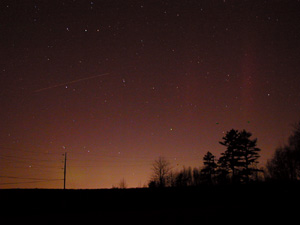
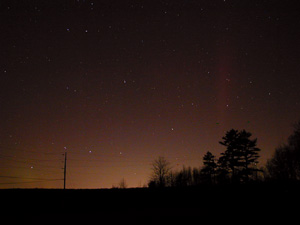

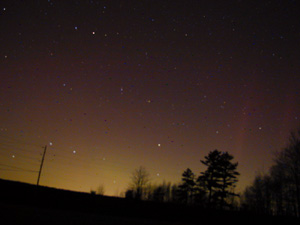
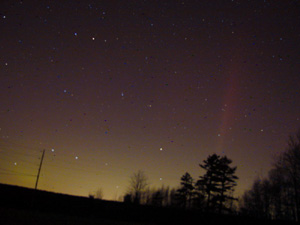
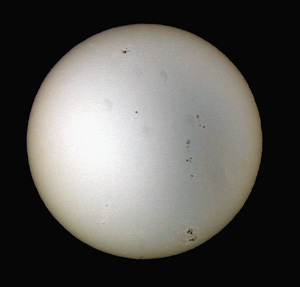


All images taken with Olympus C2020Z and C2000Z digital cameras
I missed the major Auroral display of Monday evening, November 5, that was visible even in the southern-most locations of the United States because of local cloud cover. On Tuesday, November 6, I took images of sun spots after learning of increased activity on the Sun. A whole Sun image and a closeup sunspot image are included below. The images were taken with an ETX-125 telescope using a Bader solar filter.
Auroral levels were high on the afternoon of November 6, so I set up two digital cameras and a film camera at the overflow parking lot near our Eckley site. This site has a good non-obstructed view of the Northern horizon. I observed the aurora from around 7:00 pm to 11:15 pm. This was a minor aurora that was at its best early in the evening and consisted of a general glow low on the northern horizon along with a pink/red band at about 25 degrees altitude and occassional red vertical rays. When I got home I noticed from past satellite images that the auroral levels during my observations had subsided from afternoon levels. As luck would have it, the auroral levels incresed strongly over PA skies after midnight until around 3:00 am, and I missed it. The aurora images below were all taken between 7:30 and 8:00 pm. The images were taken with two digital cameras using 16 second and 32 second exposures. The digital cameras are proving to be great auroral recorders and the images obtained show aurora effects to a greater degree than that observed visually. Temperature was 38 degrees fahrenheit but seemed colder because of a continuous wind from the North.
The last image is a non-aurora and wide-angle shot of the Pleiades rising to the East over the Eckley Observing Site.
CLICK ON THUMBNAILS BELOW FOR LARGER IMAGES:
CLICK ON THUMBNAILS ABOVE FOR LARGER IMAGES